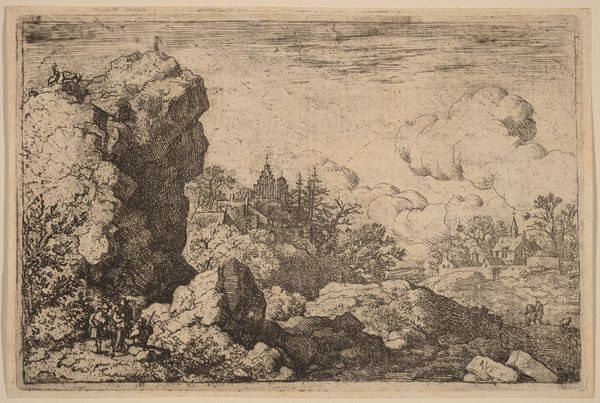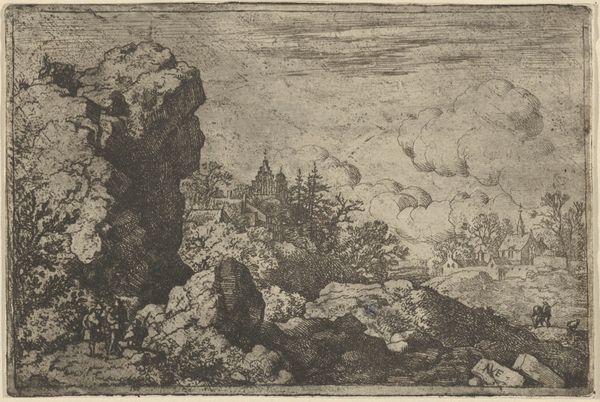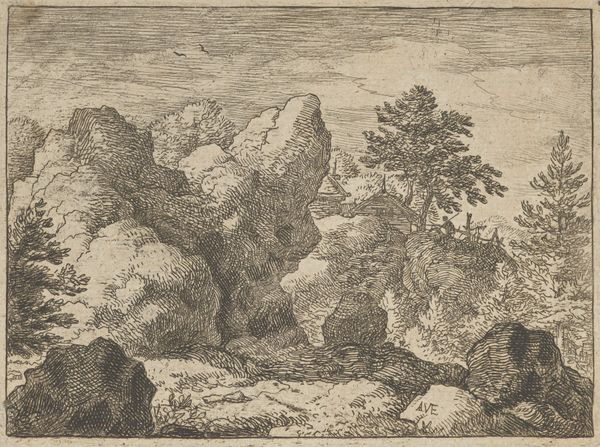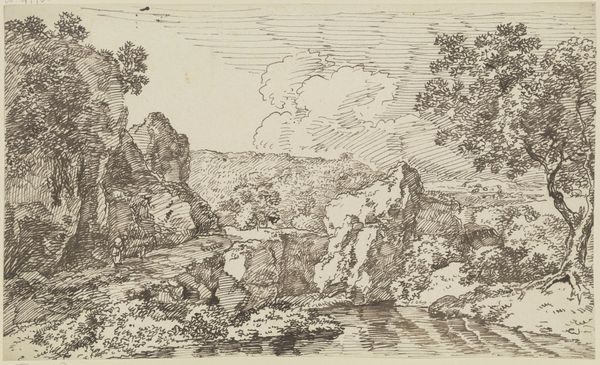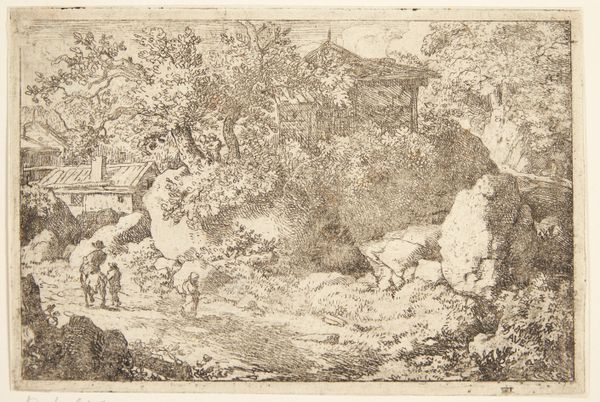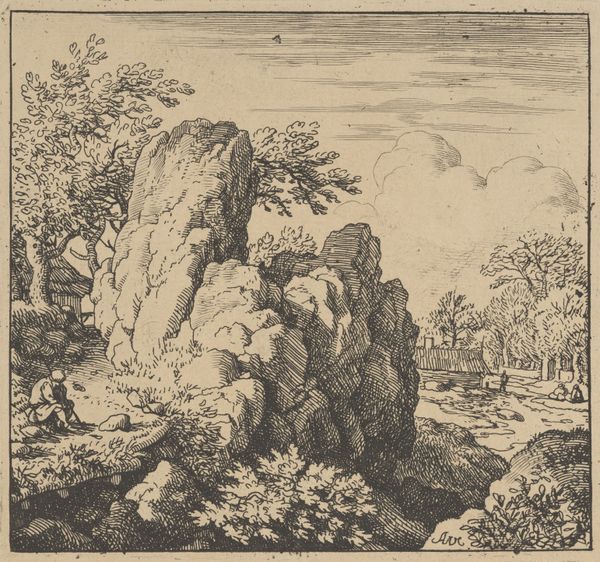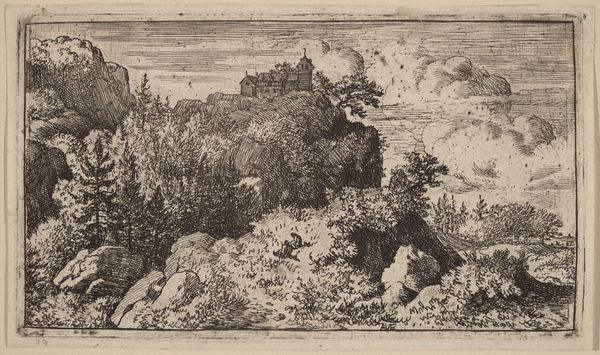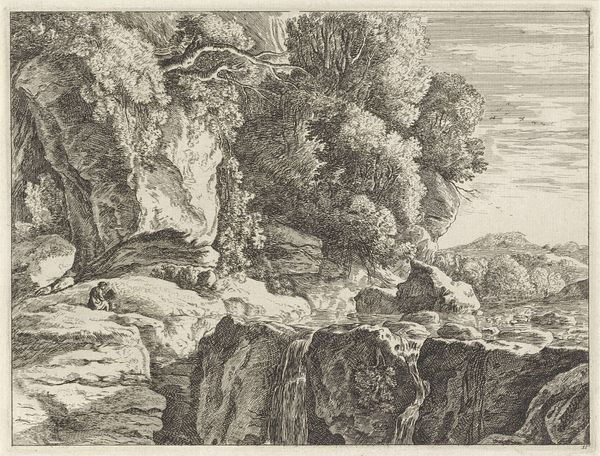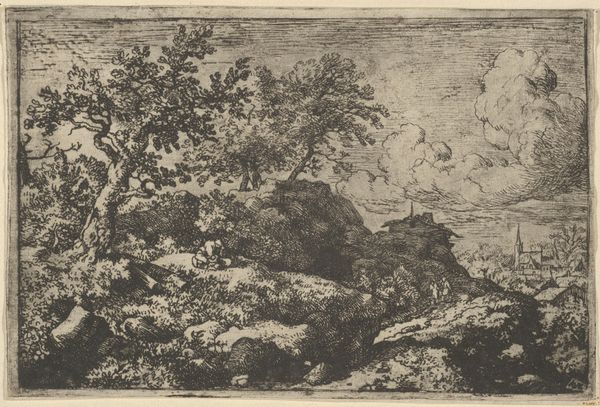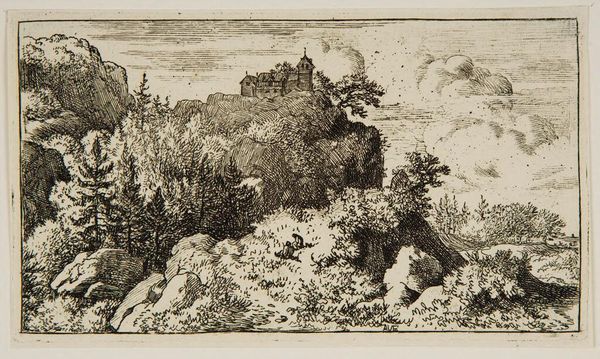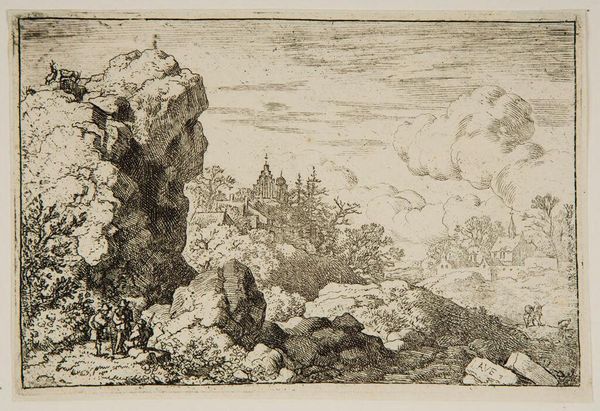
drawing, print, etching
#
tree
#
drawing
#
baroque
# print
#
etching
#
landscape
#
men
Dimensions: Plate: 3 1/4 × 5 13/16 in. (8.2 × 14.8 cm) Sheet: 3 7/16 in. × 6 in. (8.8 × 15.2 cm)
Copyright: Public Domain
Curator: "The Draftsman at the Rock," etched by Allart van Everdingen between 1621 and 1675, offers us a glimpse into the artistic process of landscape depiction during the Baroque era. Editor: It's immediately striking how dynamic and evocative the composition is, despite its relatively small size and monochrome palette. The varied textures—rough rock, wispy clouds—really catch the eye. Curator: Indeed. But what's also vital is recognizing the historical context. The Romantic idealization of nature emerged in parallel with the expansion of European colonialism. Are these figures merely appreciating nature, or staking a claim on it? Who does that rock really belong to? Editor: That's an interesting proposition. Focusing on its aesthetic qualities, notice the skillful use of line and hatching, creating an impressive sense of depth and three-dimensionality in this landscape, particularly evident in the rendering of the foliage and rocky terrain. Curator: Precisely, Everdingen's landscapes can also be analyzed for what they omit. We see travelers, perhaps, but rarely the farmers or indigenous populations whose labor shaped that landscape. The etching technique, moreover, allowed for mass reproduction. Who had access to these images, and what impact did they have on constructing perceptions of landscape, wilderness, and ownership? Editor: I concede, the implications are definitely there to be investigated. Still, considering just the formal execution, how the artist balanced light and shadow in an impactful composition--it’s fascinating to think about what the scene *felt* like in reality when captured. Curator: I agree with the artistic impact-- and considering that impact in conversation with history, we reveal richer interpretations that explore not just what we see, but what is intentionally left unseen, making it such a potent artwork to examine even today. Editor: An astute final assessment. Examining those juxtapositions encourages a lasting, deeper exploration of visual presentation and artistic interpretation, well beyond the surface of the rock, as it were.
Comments
No comments
Be the first to comment and join the conversation on the ultimate creative platform.
